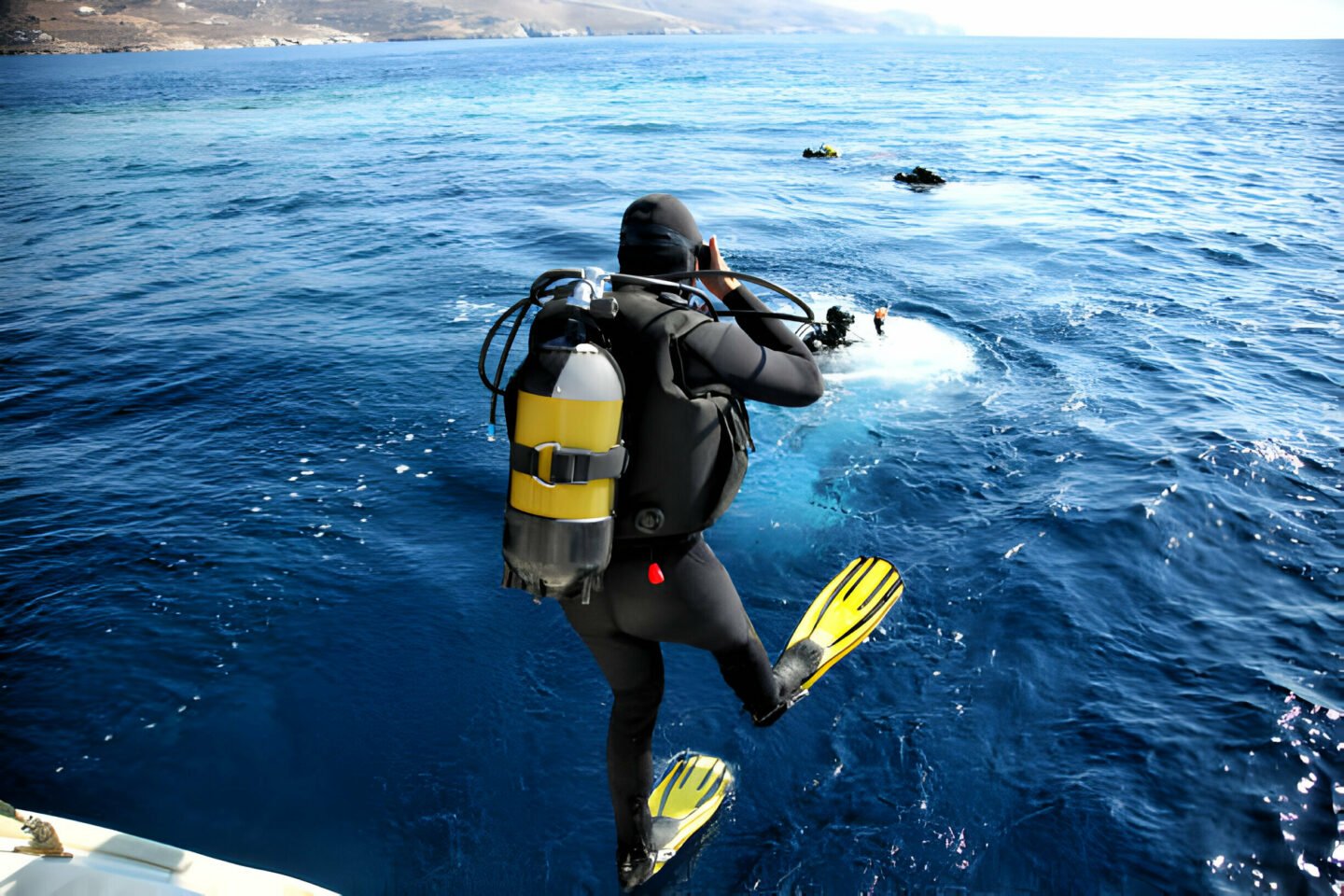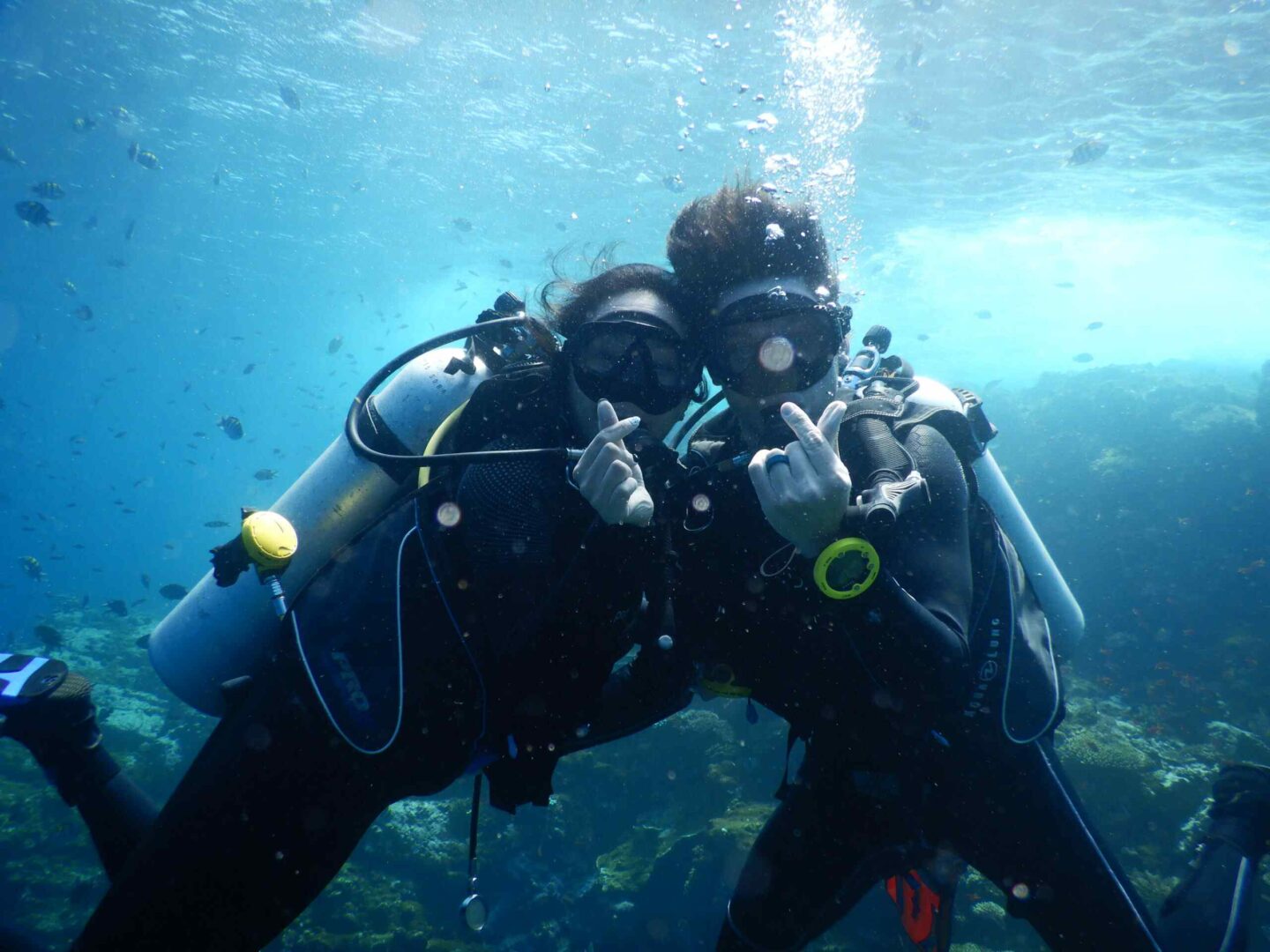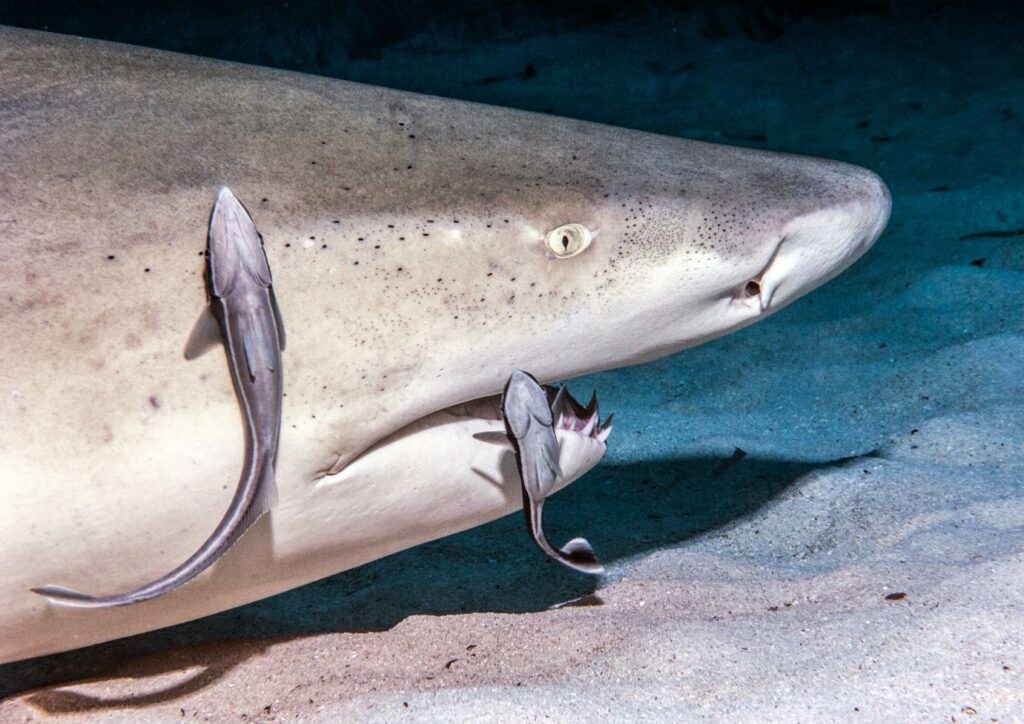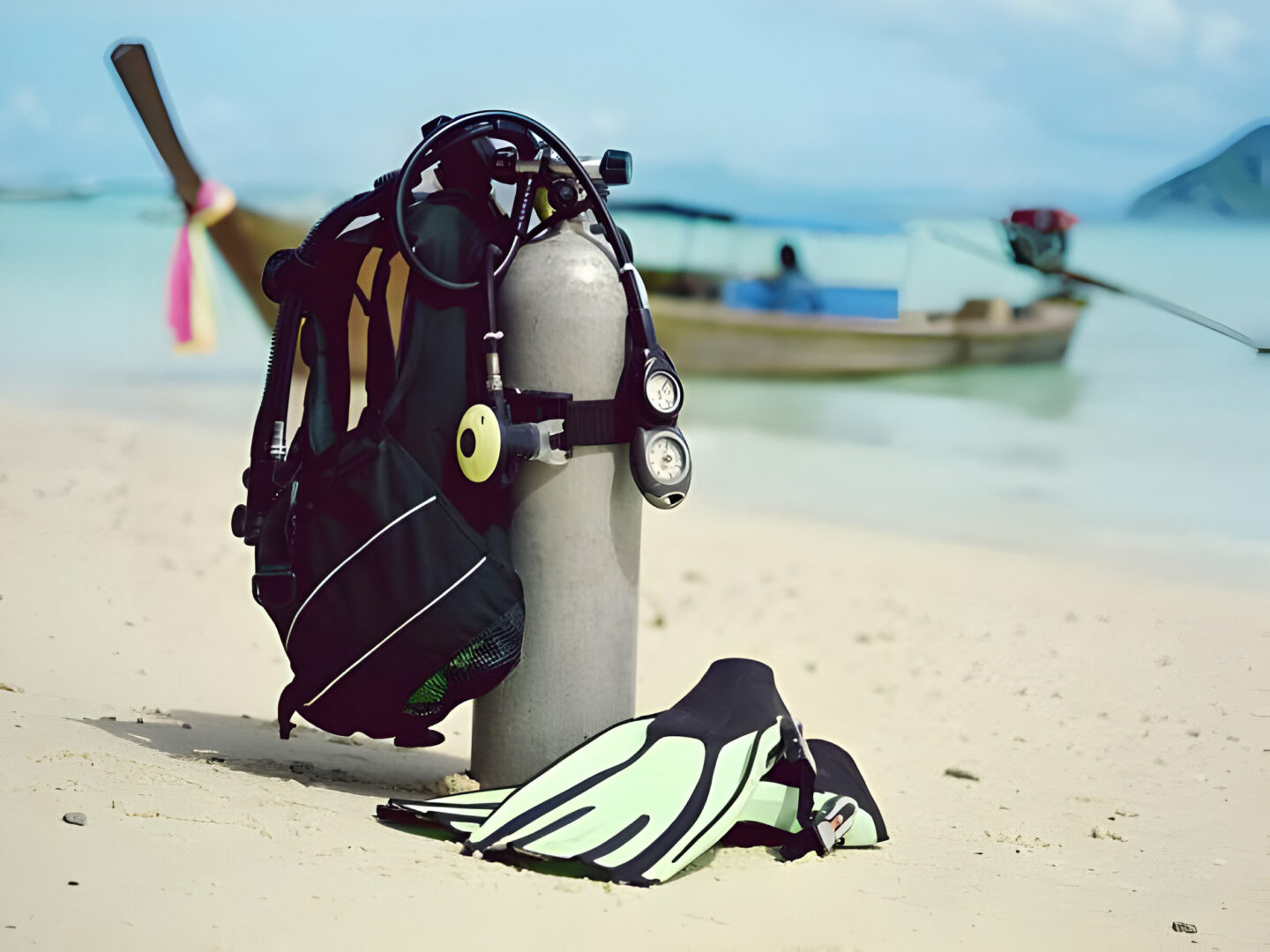What is Nitrox Diving? Pros and Cons of Enriched Air
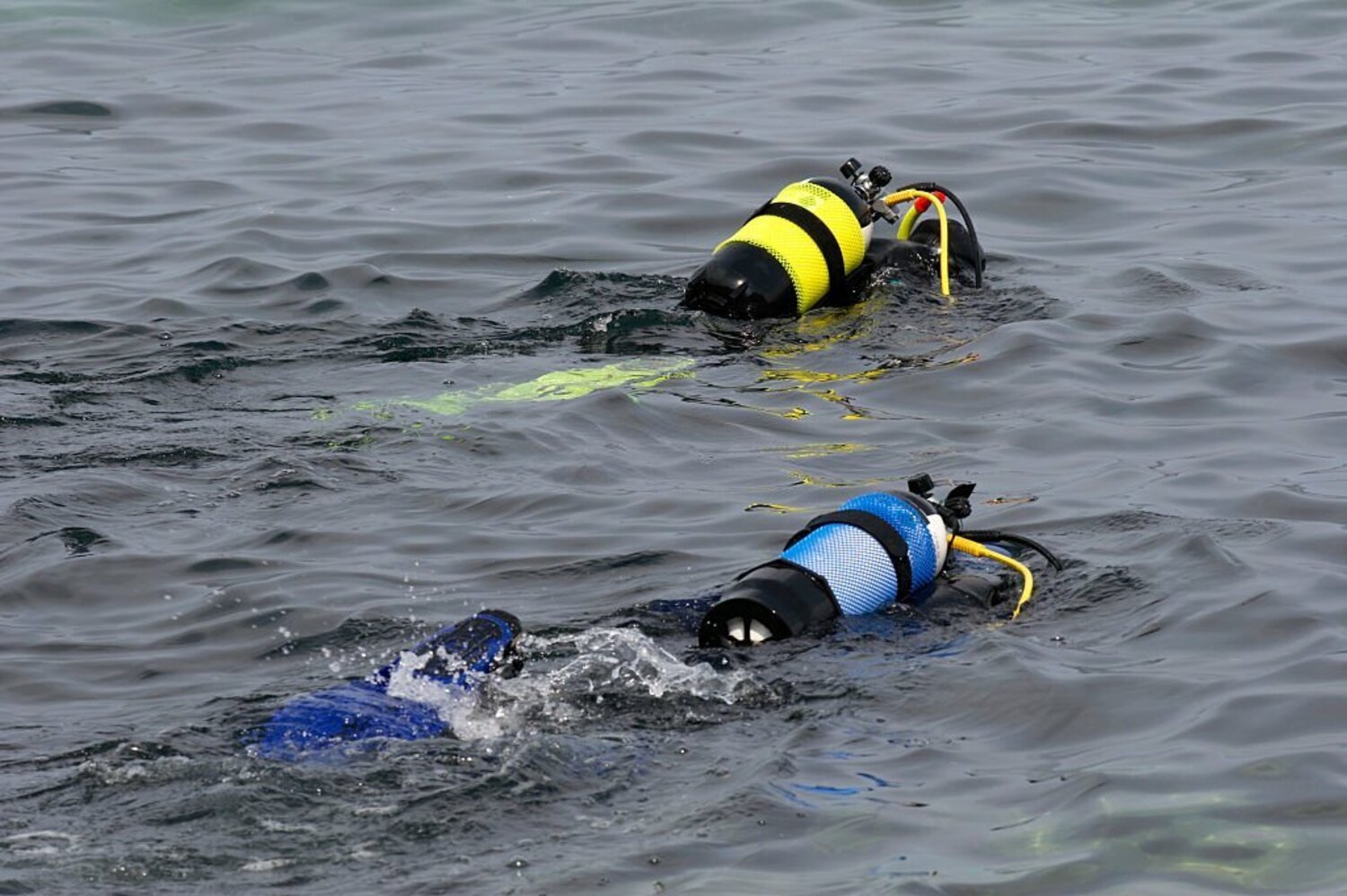
You might have observed that certain tanks or cylinders have markings in bright green and yellow during your scuba diving adventure. The divers in these tanks are using nitrox, a unique mixture of gas designed to enhance the diving experience. This indicates that the tanks are filled with enriched air. Like everything else in diving, nitrox can be extremely dangerous if used improperly or extremely effective if used correctly. Let’s examine what nitrox diving is, the benefits and drawbacks of using it, and the reasons why some divers favour using this enhanced air when diving!
What is Nitrox
Scuba divers prefer to abbreviate lots of the names in diving, such as buoyancy control device (B.C.D.), submersible pressure gauge (S.P.G.), and so on. The terms nitrogen and oxygen are shortened to form the word nitrox. Any gas mixture with more than 21% oxygen content is referred to by this term.
Enriched Air Nitrox (EANx) is the full name when this occurs because we have enriched the mix with more oxygen. We just shorten this term to Nitrox because divers are already lazy and Enriched Air Nitrox is a mouthful (I get annoyed typing it out so much).
Nitrox tanks will be marked differently from regular air tanks to make identification simple. The most popular markings are fabric bands or stickers with the words Nitrox or Enriched Air written on them, in green and yellow colours, although some operators use blue tape. Verify locally as different regions of the world might have different colour schemes or markings.
Why Use Nitrox When Diving?
The amount of nitrogen in our bodies always determines how deep and how long we can stay underwater when scuba diving.
Our bodies absorb more nitrogen the longer and deeper we descend. You may occasionally have enough air in your tank to continue diving even after you’ve used up all of the nitrogen allotted for the dive, depending on the diver and the dive. This can be annoying since your no-decompression limits (NDL) require you to stop the dive at this point.
On the other hand, because of the increased oxygen content, Nitrox diving lowers the amount of Nitrogen that enters the body. This indicates that your NDLs have been extended, so you would now be able to continue diving and have a longer bottom time in the same circumstances as before.
Pros and Cons of Nitrox Diving
As it reduces nitrogen loading to enable more dives in a day or longer, deeper dives (depending on air supply), nitrox sounds pretty great so far. However, there are drawbacks, so let’s examine the benefits and drawbacks of nitrox use.
Pros
- Extended NDLs
- Decreased nitrogen load during several dives in a day
- Potentially higher energy because of more oxygen
Cons
- Each tank of nitrox is more expensive
- Extra planning prior to each dive
- There is no advantage when diving with non-nitrox divers
- Additional instruction is required
Nitrox-Enhanced Air Diving Tables
We must use different tables when planning our dives because diving on Nitrox reduces nitrogen consumption. Nitrox tables are easily distinguished from regular recreational dive planner (RDP) tables by their bright yellow and green colour.
Typically, these tables include NDLs, or no-stop times, based on oxygen concentrations of 32% and 36%. These numbers represent the typical nitrox mixes
Oxygen Percentage
Oxygen Percentage | Depth | No-Decompression Limit |
21% | 18 m / 60 ft | 56 Minutes |
32% | 18 m / 60 ft | 95 Minutes |
36% | 18 m / 60 ft | 125 minutes |
The above illustrates that for an 18 m / 60 ft dive, using 36% EANx more than doubles the NDL. The dives are planned identically, with the goal of ensuring that your body does not contain an excessive amount of nitrogen during any one-time or recurring dive series.
One drawback of some agencies’ dive tables is that they are only available in two or three oxygen percentages, as the table above illustrates. Here’s where having a dive computer comes in handy.
Any gas mix that contains more than 21% oxygen is regarded as nitrox diving. Depending on the model, dive computers let you adjust the oxygen percentage between 22% and 50%, and some technical computers let you set it as high as 100%. This gives you a lot more freedom to arrange dives and choose the ideal combination for the dive you want to do.
What makes a Nitrox Certification necessary?
As with any diving, there are risks involved when using Nitrox, the primary one being Oxygen Toxicity. When a diver surpasses the maximum partial pressure of oxygen in a gas mixture, oxygen toxicity occurs. The partial pressure of oxygen rises as we descend farther. While we are on land, breathing 100% oxygen is safe and problem-free underwater, things get more complicated. We reach the partial pressure oxygen limit at shallower depths with nitrox because of its higher oxygen content. Oxygen toxicity risks are the primary justification for requiring nitrox training and certification.
Symptoms of oxygen toxicity include:
- Chest pain
- Coughing
- Dizziness
- Trouble breathing
- Blurred vision
- Muscle twitching in face and hands
- Ezoic
- Nausea
- Death
It is extremely unlikely that divers would be able to plan what mix to use and what depth to stay above in order to avoid oxygen toxicity if they did not have the nitrox certification. For this reason, before diving and breathing from a nitrox tank, it is crucial to complete an Enriched Air Nitrox course.
Can Nitrox Allow You to Dive for Longer?
Nitrox, regrettably, isn’t a magic molecule that allows us to dive indefinitely. Since enriched air diving lowers nitrogen loads, as we’ve read, we can dive for longer and to a deeper depth. All of us eventually run out of air, though, and must safely conclude the dive because we are still limited by air consumption.
The same applies when diving with Nitrox. Though occasionally this means we use our gas more quickly than on regular air dives because we are able to stay deeper for longer. However, why? This is because we are breathing our nitrox air faster because we are under greater pressure for longer periods of time and that nitrox air is in a compressed state.
The challenge when diving on nitrox is to strike a balance between being able to stay long enough to reap the benefits of the lower nitrogen load and not staying at a maximum depth for too long, which would result in short dives.
Does Nitrox Help Lower the Risk of Narcosis?
The effects of nitrogen narcosis are identical to diving on regular air because we still have nitrogen in our tanks when we dive on Nitrox.
When experiencing gas narcosis during a Nitrox dive, proceed as you would if you were experiencing narcosis on regular air. Ascend to a higher depth until the effects subside. You should stop the dive if you’re still uncomfortable.
Enriched Air Scuba Diving
With any luck, you now have a much better idea of what enriched air is and how Nitrox diving works. As you can see, there are risks associated with diving as with any activity, but Nitrox can truly enhance any dive when used sensibly and safely.
One of the most popular specialities for divers to learn is nitrox, especially for those who are planning multi-dive vacations. It really makes those trips more enjoyable because there is less nitrogen load and no need to push NDL limits. A few scuba divers begin their technical diving journey with a Nitrox scuba diving course. For whatever reason, Nitrox is a great certification to have, and let’s face it, diving with Nitrox makes you look cooler!
Enjoy a Diving Trip in Raja Ampat and Komodo with La Galigo Liveaboard
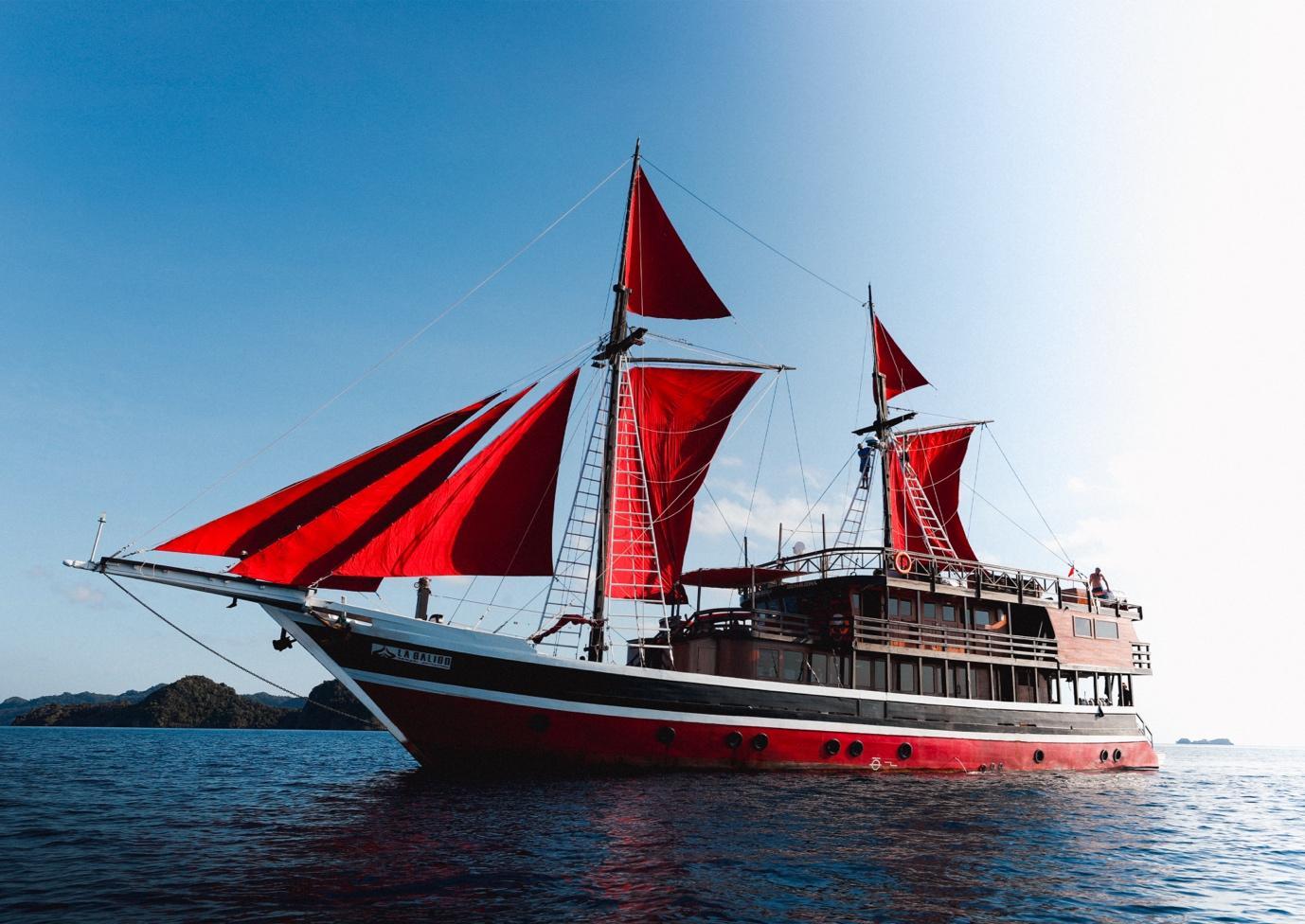
La Galigo is known as one of the best liveaboard diving boats in Raja Ampat Indonesia, and it offers trips to well-known diving destinations such as Komodo and Raja Ampat. The Coral Triangle is located in Indonesia, which has the highest marine biodiversity on the planet.
La Galigo Liveaboard Diving was founded in 2015 by two avid divers who wanted to explore some of Indonesia’s pristine reefs but found that all existing scuba diving options were frequently out of their budget, and wanted to provide an affordable option for everyone to be able to explore these beautiful places.
La Galigo Liveaboard Diving in Raja Ampat & Komodo is a friends and family affair, and our liveaboard diving trips are always focused on fun, safety, guest comfortability, and are exceptional value for money. Our trip prices range from $2,160 for a six-day Komodo liveaboard diving trip to $3,375 for an eight-day Raja Ampat liveaboard diving trip. The price includes four meals a day, diving three to four times a day or snorkelling, and land tours.

